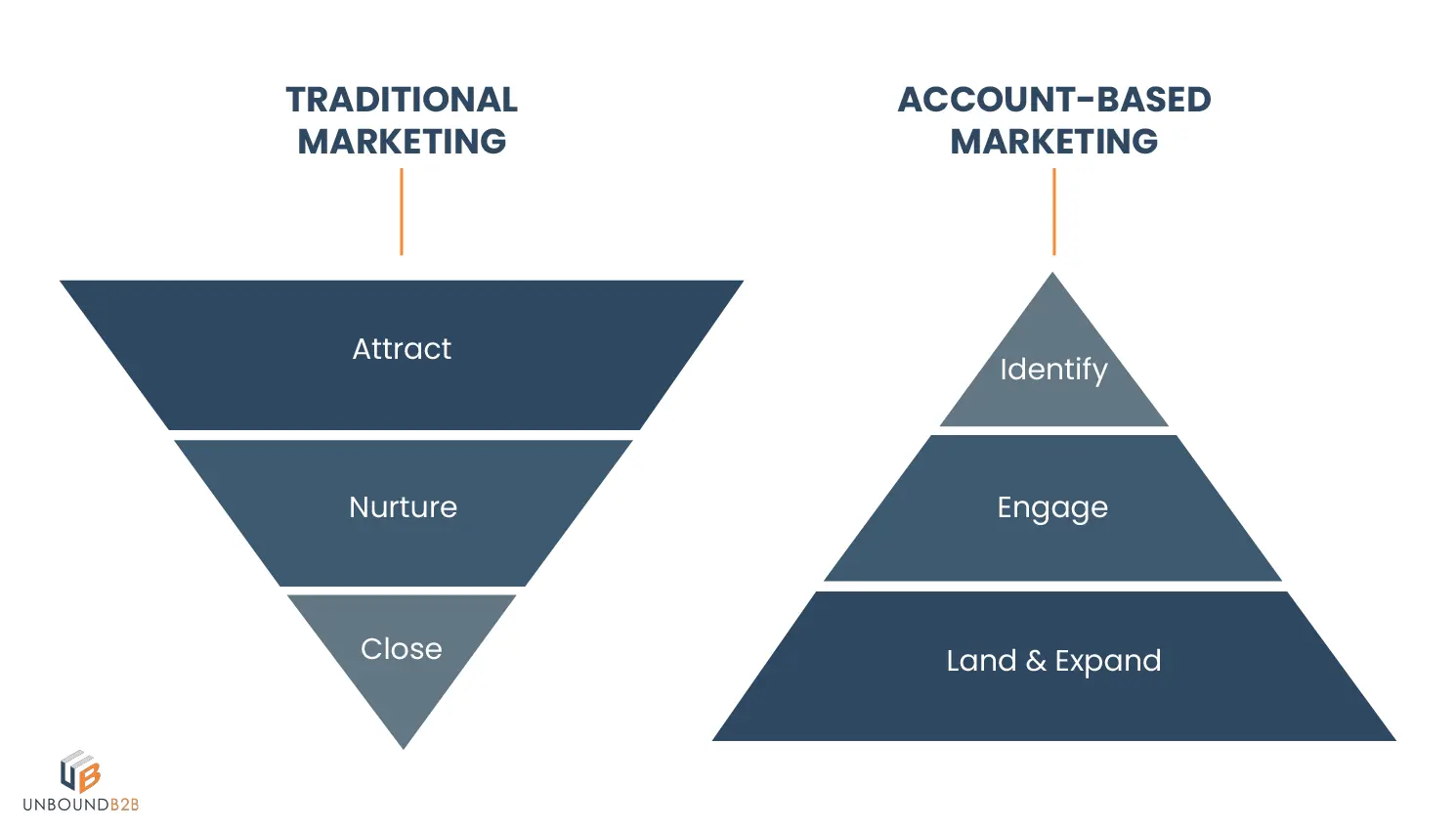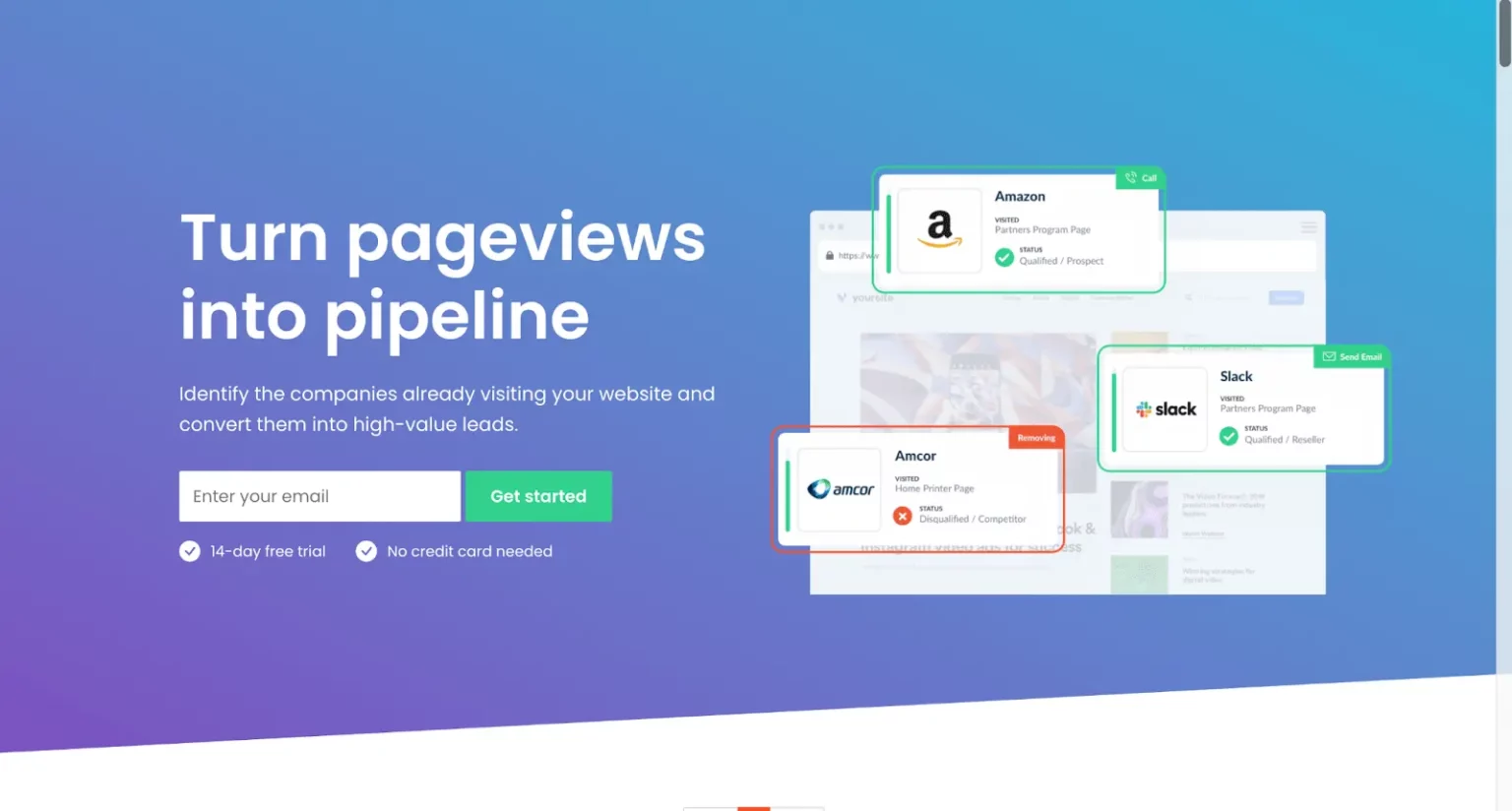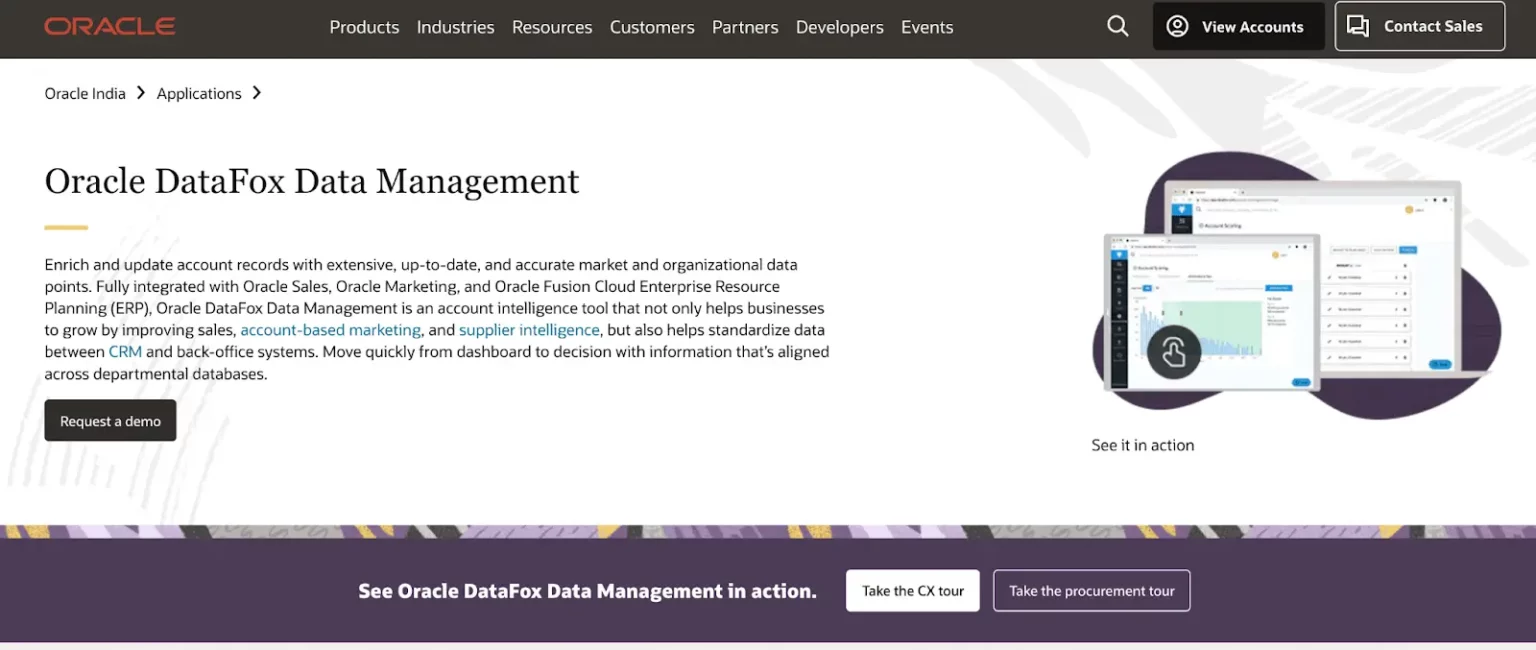
Introduction
As a business owner, you are always looking for ways to generate demand for your products and services, drive qualified leads, and boost sales. While most businesses focus on increasing their brand’s reach and engaging as many prospects as possible, that’s not the only way to attract sales opportunities.
Instead of engaging wider audiences, you can also deploy an account-based marketing (ABM) strategy to focus your marketing efforts on a specific targeted group. The key to success here is to identify accounts that matter and drive more revenue.
Before I tell you more about using a data-driven strategy in this account-based marketing guide, let’s discuss what it’s all about.
What is Account-Based Marketing (ABM)?
Account-based marketing (ABM) is a strategic sales and marketing technique that engages and converts highly targeted audience groups using personalized communication.
With an ABM strategy in place, you just need to identify a set of high-value accounts and focus all of your marketing efforts on engaging them to drive sales and revenue.
When compared to the traditional marketing approach, here’s how the flow of account-based marketing looks:

Account-based marketing is a customer-first engagement strategy that can help you generate more revenue faster by delivering personalized and timely experiences to your most valuable buyers.
What Are the Benefits of Data-Driven Account-Based Marketing?
Before using any new marketing approach, it is necessary to evaluate whether it is right for your business. And, account-based marketing is no different.
To help you make an informed decision, I’ve listed the key benefits of using a data-driven ABM strategy for your business.
1. Align Your Sales and Marketing Teams
One of the benefits of deploying an ABM strategy is that it keeps your sales and marketing teams aligned.
Improving cross-team collaboration and communication helps you maintain transparency. It ensures that both teams are on the same page. Moreover, they should focus on achieving the same goals and fulfilling their parts.
When a new lead comes in, your sales team will be able to spend more time nurturing a qualified lead instead of wasting time trying to engage unqualified leads. This can help you increase the average order value and generate more revenue.
Similarly, if a target account’s purchased plan is about to end, your marketing team can engage with them and help them continue the partnership more seamlessly.
2. Generate Higher Returns on Investment (ROI)
Account-based marketing is all about focusing your marketing efforts on high-value accounts that have the maximum potential of converting into sales.
As you’re targeting specific groups of people instead of large audiences, you are likely to spend less on marketing. But all of your marketing efforts will help put your brand before the right people at the right times.
Running such highly targeted advertising campaigns can increase your chances of driving conversions and sales. If you power your account-based marketing strategy with intent data, you can generate higher ROI for your marketing initiatives.
3. Drive More Revenue
ABM is a great technique for B2B Sales. But, engaging high-value accounts can bring you more benefits in the long run. You will be selecting accounts based on their likelihood to buy your product or services, which will make sales easier.
At the same time, upselling and cross-selling your products and services to your high-value accounts will be easier as well. It can help increase your average order value and generate more revenue for your brand.
Ready to start a personalized ABM campaign?
How Can You Implement a Data-Driven ABM Technique for Your Business?
Now that you’ve learned what account-based marketing is all about and what benefits it offers, let me show you how to leverage it effectively. Here’s what you need to do to deploy an effective ABM strategy through its different stages for your brand:
1. Identify Target Accounts
First things first, you need to identify your target accounts that have the potential to generate more sales and revenue for your brand. The target accounts will differ from company to company based on your own unique business needs. Every business must identify its ideal customers to set a target group.
However, we can give you a few tips to identify the target accounts for your ABM campaign. Here’s what you can do to identify your target accounts:
- Identify big companies that can help you increase the average order value and generate substantial revenue in the long run.
- Find companies that need precisely the solution you are offering. This will increase the likelihood that they will purchase your product.
- Find target accounts with a short decision-making process based on their company size and structure. This will also help you close deals faster and generate quick revenue.
- Target companies that are using products offered by your competitors. To engage them, you should highlight a feature that makes you stand out among your competitors.
Following these tips can help you come up with a list of potential target accounts for your account-based marketing strategies.
But where can you find these target accounts?
You should look for customer relationship management (CRM) tools based on your previous interactions with targeted businesses. If you find certain companies that are a good fit for your product, you can easily research to find other lookalike companies.
You can also use a tool like LeadFeeder to see which companies visit your website and scroll through it without filling out a form. It displays contact information of the company’s profile too. This allows you to follow up with visitors who have never inquired about your product or time outreach to potential leads in your sales pipeline.

Once you’ve listed all potential buyers, it is time to narrow down the list and choose the target accounts to pursue. You should create multiple but shorter lists of targeted groups based on their needs and buying processes.
It is also important to identify the decision-makers of your targeted companies and find ways to engage them.
2. Research Each Target Account
To run highly targeted campaigns, you need to understand your target accounts on an individual basis.
Here’s what you should look for in your target accounts:
- Industry and competitors
- Company size
- Annual sales and revenue
- People from their key management and decision-makers
- Organizational structure and buying teams
This information can be accessed on their website or in press releases and annual company reports.
You can use a tool like DataFox to search for businesses that are similar to your existing customer profiles, that match a list of specific criteria, or map your competitors. It’s very reliable, but better for finding individuals than key decision-makers within an organization.

Remember, your biggest goal is to identify and get access to the key decision-makers of your target accounts. Once you find it out, you can use it to run integrated ad campaigns with your B2B marketing team.
3. Measure Results
The most important part of running any marketing campaign is measuring its effectiveness. So, you should set powerful KPIs (key performance indicators) to track, monitor, and optimize the results of your ABM campaigns.
Some of the metrics you can track include:
- Ad views
- Number of visits to your site
- Time spent on site
- Social shares
- Email responses
- Number of multiple visits from the same target account (repeat visits)
- Number of leads generated
- Lead scores
- Number of content downloads and product trials
- Length of the sales cycle
- Average order value
By tracking results, you can identify the target account lists that are driving more revenue and also analyze which strategies are the most effective.
How to Personalize Your ABM Campaigns
The key to effective ABM marketing is personalization. Rather than segmenting users based on their geography, interests, or device type, the goal of your campaign should be to reach relevant audiences with offers that are highly contextual.
Your audience will thank you for it and help you reach your goal of advertising and branding. So, here’s what you need to do:
1. Use Personalized Content
Personalized and relevant content plays a big role in attracting and engaging buyers and driving conversions. You have to remember that your potential customers are going through their daily routines, mostly focused on their busy lives. When a new email message arrives with a subject line that is interesting and offers a solution to a personal problem, they will be more open to reading it.
You need to do more than just speak to your audiences’ interests. Instead, You should be conversing with them on their terms by tailoring your content to program-specific accounts.
2. Tell a story
Remember, an ABM campaign doesn’t have to be all business. It can be fun to get inside your prospective’s head and learn about their interests through storytelling. People are more likely to engage with your content when they feel like they understand not only the product or company but also the individual offering it to them.
Business stories can come in all shapes and sizes. This doesn’t have to be your standard whitepaper:
- You can combine product videos with case studies based on your demand generation.
- You can leverage relevant success stories when tapping your target accounts.
- You can highlight customer experiences and success stories.
- You can speak about your company culture and milestones achieved.
3. Utilize Team Effort
Account-based marketing is all about team effort. You should ensure that both your marketing and sales team members create an ABM strategy together.
While creating an ABM strategy, you should consider:
- Who are the decision-makers at your target accounts? Are they stakeholders or business heads or the CEOs of those companies?
- What type of content will you need to attract and engage those decision-makers?
- Which channels will you use to share content with the decision-makers or each of your target accounts?
- How will you help them move down the sales funnel?
Along with creating the right type of content, it is also essential to distribute it effectively. You can use social media channels, email marketing, and retargeting campaigns to make your content reach the right people at the right times.
Successful Examples of ABM Efforts
ABM requires paying careful attention to your customers, figuring out what they want and how to give it to them. Here are three examples of companies that have successfully tracked and targeted their customers:
1. GumGum
GumGum, a media company based in the US, came up with a creative approach to reach out to the fast-food giant McDonald’s. The company designed 100 burger kits and sent them to the executives at both McDonald’s and its media agencies. The box also contained a fast-food receipt that had the names of each individual on it.
In addition, GumGum used much of McDonald’s BigMac ingredients to explain different features of their technology. They then shared the pitch with a wider social media audience and selected key decision-makers by tagging them on their individual accounts. This resulted in them bagging a meeting with the key stakeholders at McDonald’s.

This is the perfect example of how you can grab people’s attention on social media and stand out from the crowd. It was unique, thought-out, and well-organized, providing all of the required ingredients for success.
2. Rapid7
Once Rapid7 implemented this idea where they sent out old-school View-Masters picture wheels in a bid to promote the release of their new product.
P.S. You may not be familiar with what a View-Master is, but it was a pretty big deal in the 1980s.
The result? It unboxed old memories in people and got them excited about the new product. They wanted to know more.
Rapid7’s response was very good, which resulted in a higher conversion rate. Even if someone wasn’t interested in the product, it did open future opportunities for sales.
3. RollWorks
RollWorks integrated ABM into their existing strategy of making a big impression on prospective customers.
The inbound marketing team worked with the sales development team to create display ads, landing pages, and direct mail pieces. They employed ABM to extend their marketing reach farther down the sales funnel in order to keep the momentum rolling.
Then, they had prospects who had not advanced in 35 days define their goal, and then mail them a booklet that explained how to get started. The booklet also contained customer testimonials from people who had adopted the company’s products. RollWorks also offered lower-level products that weren’t related to their main service, but displayed ads for their full product suite to educate their customers.
The result? Using the door opener kits enabled the team to increase their appointment rate from 2.6% to 10.2%. Also, those who received the kit were three times more likely to book an appointment with RollWorks.
This is a perfect example of how to layer ABM marketing on top of existing sales efforts.
Want more inspiration? Here are 10 more examples with strategies of ABM.
Are You Ready to Boost Sales with ABM and Integrated Ad Campaigns?
Account-based marketing is all about running highly-targeted sales and marketing campaigns, which is known for driving more revenue than traditional marketing campaigns.
You just need to collect data, research ideal target accounts for your product, and identify ways to engage them using personalized content. It will increase your chances of generating high-value conversions.
Still have questions about growing your business with data-driven marketing? Here’s our eBook that dives deeper than this blog.
Our blog
Latest blog posts
Tool and strategies modern teams need to help their companies grow.

B2B companies must generate leads that are ready to buy their products in order to me...

In the absence of a constant flow of leads, sales teams can't meet their targets and ...

Podcasts and webinars are powerful tools that marketers can use to reach new audience...



